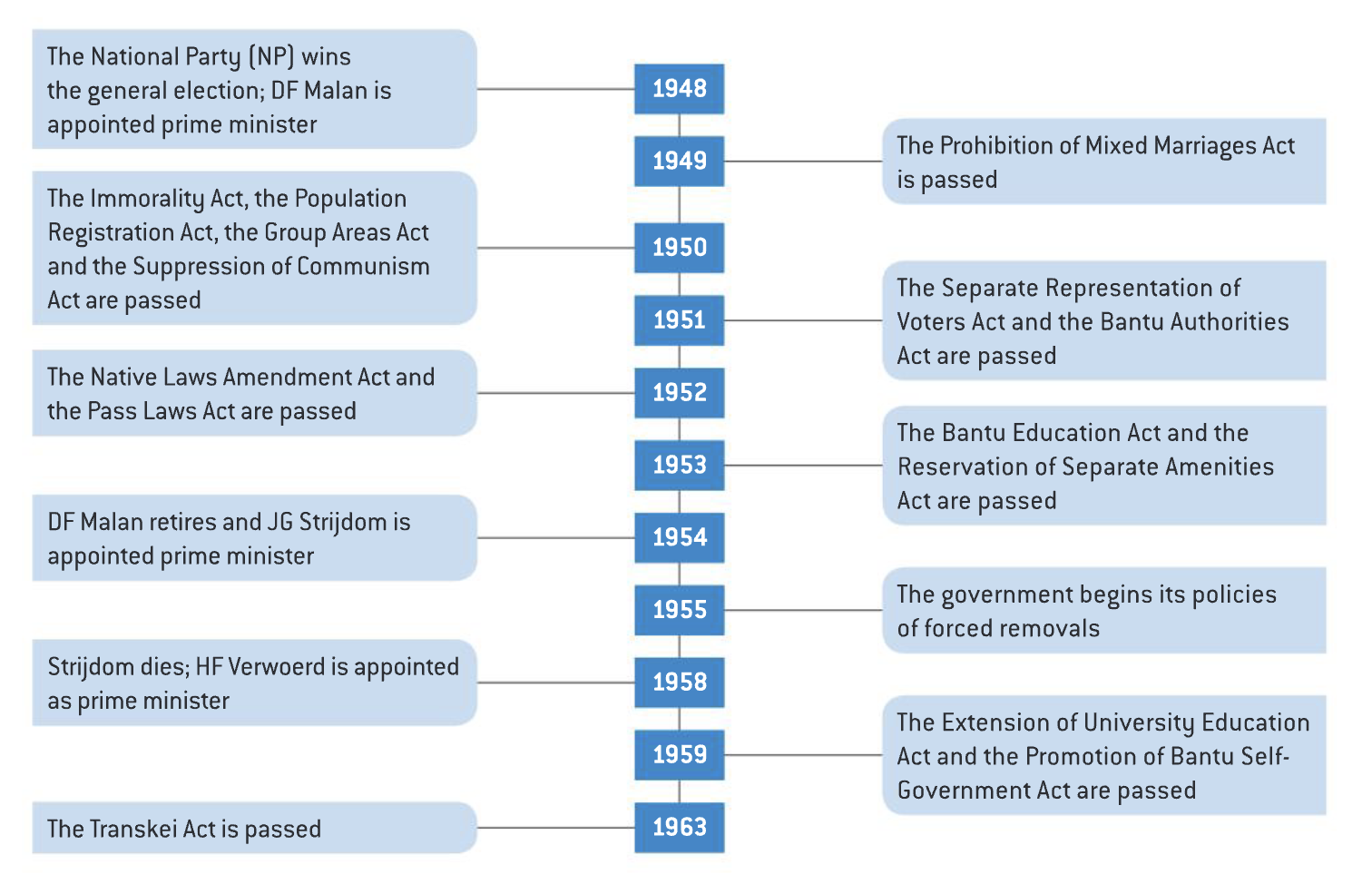1.2

Section 1.2 — The Nature and Characteristics of Apartheid (Detailed Notes)
Core Idea
Apartheid = a system of legalised racial segregation introduced by the National Party from 1948.
It was not one single law but a comprehensive network of laws regulating political rights, residence, education, work, and daily life.
1. Grand vs. Petty Apartheid
Grand Apartheid: Long-term, structural separation. Focus on:
allocation of land and housing (Group Areas),
political rights (Bantu Authorities, Bantustans),
citizenship (Promotion of Bantu Self-Government Act).
Petty Apartheid: Everyday segregation. Focus on:
public facilities (Separate Amenities),
marriage and sex (Mixed Marriages, Immorality Act),
education (Bantu Education Act).
(IB tip: Use these two terms to structure any essay on the “nature” of apartheid.)
2. Key Laws and Policies (1948–mid-1950s)
Law / Policy | Date | What It Did | Significance |
|---|---|---|---|
Prohibition of Mixed Marriages Act | 1949 | Banned marriage between Whites and non-Whites. | Early “Petty Apartheid” — controlled private life. |
Immorality Amendment Act | 1950 | Criminalised sexual relations across races. | Reinforced racial purity. |
Population Registration Act | 1950 | Classified everyone by race (White, Coloured, African, Indian). | Administrative backbone for all later apartheid laws. |
Group Areas Act | 1950 | Segregated residential and business areas by race. | Legal basis for forced removals, township creation. |
Bantu Authorities Act | 1951 | Established tribal authorities in African “homelands”. | First step in Bantustan system (Grand Apartheid). |
Separate Representation of Voters Act | 1951 | Removed Coloured voters from common roll. | Ended last non-White parliamentary representation. |
Bantu Education Act | 1953 | State control of African schooling with inferior curricula. | Created structural inequality; key grievance for later protests. |
Reservation of Separate Amenities Act | 1953 | Legalised segregated public facilities. | Everyday visible segregation. |
3. How It Worked in Practice
Population Registration determined your “race”.
Group Areas then dictated where you could live or work.
Pass Laws (tightened under NP) controlled movement into towns and cities.
Education Acts ensured you received different curricula.
Separate Amenities kept you out of “white” facilities.
Together these created a comprehensive racial order.
4. Positives / Negatives (contemporary perspectives)
National Party & Afrikaners (positive):
Believed apartheid protected White jobs and culture.
Saw “separate development” as humane alternative to majority rule.
Black South Africans & critics (negative):
Denied citizenship and basic rights.
Produced poverty, dispossession, family separation.
Humiliating and arbitrary enforcement.
(IB tip: In OPVL, use these contrasting perspectives for “Value” and “Limitation.”)
5. Impact on Apartheid System
These laws gave apartheid its legal skeleton.
“Grand” aspects entrenched political and territorial separation.
“Petty” aspects made apartheid visible and personal, fuelling resistance.
The system’s thoroughness is why the ANC shifted from petitions to mass protest by 1952.
6. How to Use in Paper 1
Source-based questions:
When you see photos of segregated beaches, benches, schools → cite Petty Apartheid laws.
When you see maps of homelands or forced removals → cite Grand Apartheid laws (Group Areas, Bantu Authorities).
Short-answer/essay questions:
Organise by “Grand vs. Petty” or by “laws targeting private life vs. laws targeting public/political life.”
Show how early laws laid the foundation for later repression and resistance.